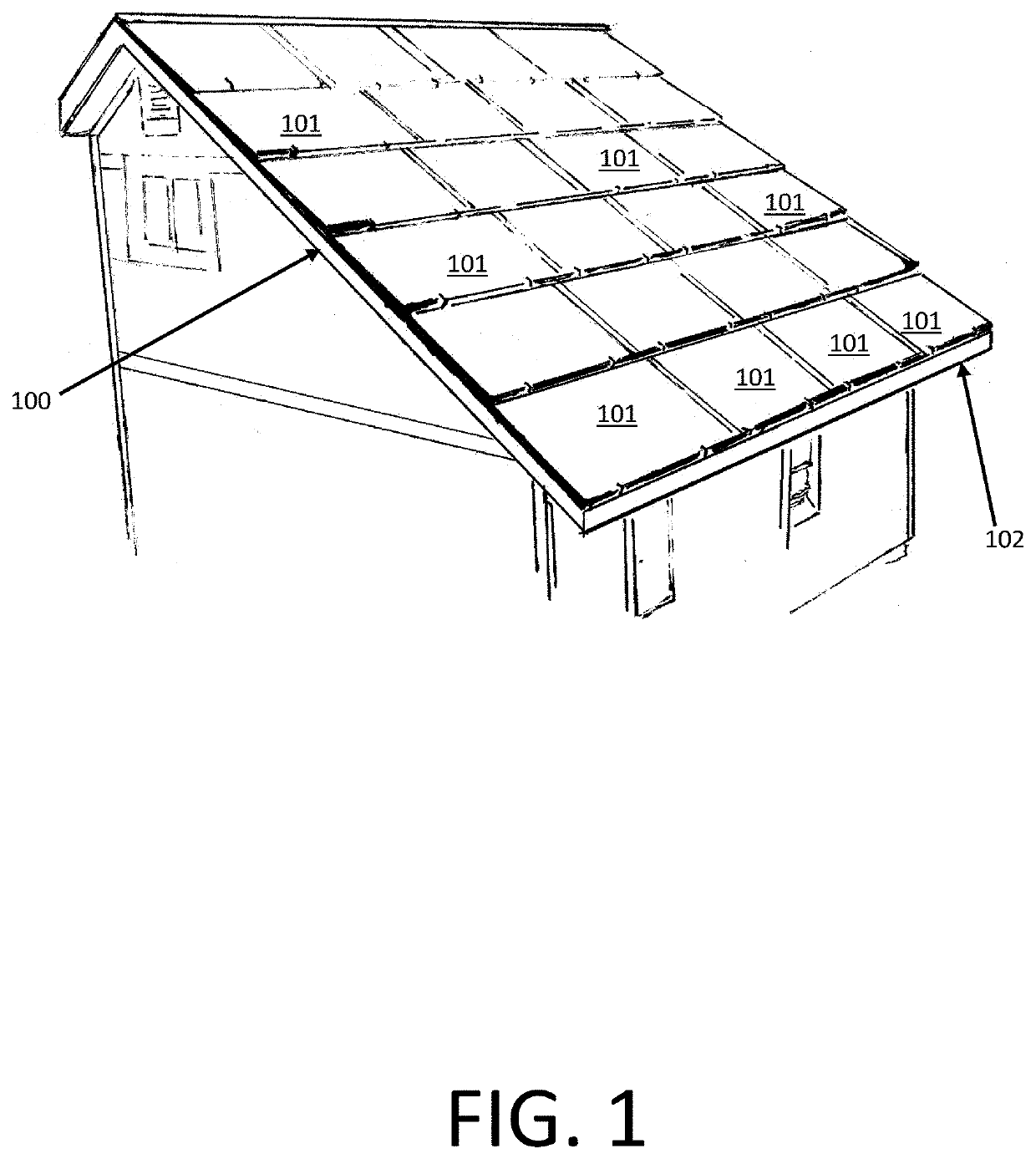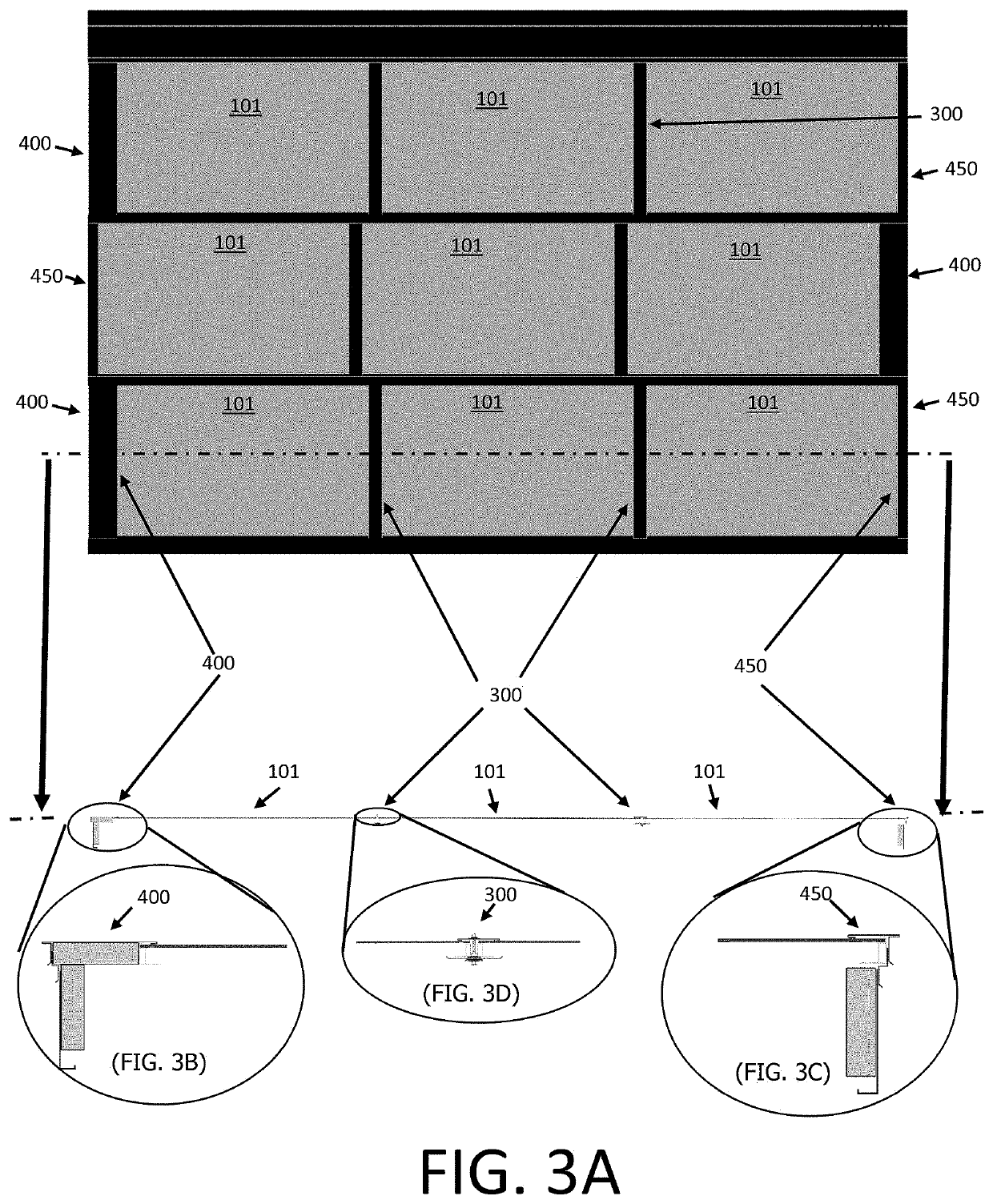Solar module mounting apparatus with edge to edge waterproofing capabilities
a solar module and mounting apparatus technology, applied in the direction of heat collector mounting/support, light and heating apparatus, photovoltaic supports, etc., can solve the problems of high cost, commercial disadvantage, and often expensive use of custom-built solar modules, so as to eliminate the need for an underlying roof, maximize solar exposure, and improve building aesthetics
- Summary
- Abstract
- Description
- Claims
- Application Information
AI Technical Summary
Benefits of technology
Problems solved by technology
Method used
Image
Examples
Embodiment Construction
[0126]The following detailed description of the invention refers to the accompanying figures. The description and drawings do not limit the invention; they are meant only to be illustrative of example embodiments. Other embodiments are also contemplated without departing from the spirit and scope of the invention. Referring now to the drawings, embodiments of the invention are shown and disclosed. In this disclosure, the terms “solar panel” and “solar module” are interchangeable. In this disclosure, the terms “up-roof” and “down-roof” will be used to describe relative positions of components. For example, a solar module which is positioned further up a roof than a clamp will be referred to as an “up-roof module”, and a solar module positioned further down a roof than that same clamp will be referred to as a “down-roof module”.
[0127]FIG. 1 shows an example embodiment of the invention in the form of a roof assembly, which comprises horizontal joint assemblies, vertical joint assemblie...
PUM
 Login to View More
Login to View More Abstract
Description
Claims
Application Information
 Login to View More
Login to View More - R&D
- Intellectual Property
- Life Sciences
- Materials
- Tech Scout
- Unparalleled Data Quality
- Higher Quality Content
- 60% Fewer Hallucinations
Browse by: Latest US Patents, China's latest patents, Technical Efficacy Thesaurus, Application Domain, Technology Topic, Popular Technical Reports.
© 2025 PatSnap. All rights reserved.Legal|Privacy policy|Modern Slavery Act Transparency Statement|Sitemap|About US| Contact US: help@patsnap.com



